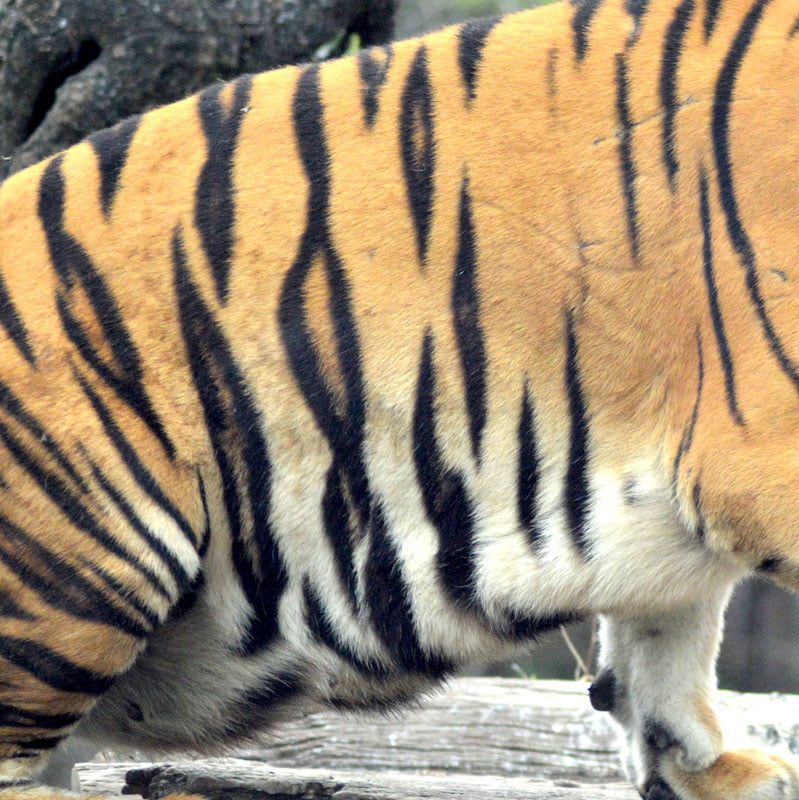Tigers’s have stripes for camouflage to allow them to approach prey animals as closely as possible to improve kill rates. Although, it’s quite a subtle question because although we know that tiger stripes act as camouflage, tigers might have evolved to have spots rather than stripes. Leopards have spots as do jaguars. This is another form of camouflage.

Disruptive coloration
The high contrast stripes of a tiger break up the outline of the animal which is why they are an effective form of camouflage. They are designed to be effective in the sort of landscape and habitat in which a tiger lives. As Fiona Sunquist writes in Wildcats of the World:
[The coat] looks very conspicuous in most cages or enclosures. In the wild, however, even in semi-open habitats, the striped coat seems to break up the body outline, and the cat almost fades from view.
Sunlight and shade
The beautiful tiger coat works very well as camouflage in sunlight and shade within forest patterns of trees and foliage.
Colourblindness, humans versus animals
To humans a tiger’s very dark stripes are high contrast when set against the orange background. People query how this can be effective camouflage. The large prey animals of the tiger are partially colourblind and they don’t see reds as we see them. Therefore to them, the orange background is muted and believed to be grey or a muted brown or muted green. So to them, the tiger is well camouflaged.

Stalking
It should be noted that a tiger’s camouflage is only designed to allow them to stalk and approach prey animals as closely as possible before making the final surge. The purpose is to improve their kill rate. Being a top predator that they do not need camouflage to defend themselves.
Stripes are unique
A tiger’s stripes are unique to each individual. Scientists can recognise tigers by their stripes using camera traps. It’s a way of counting tigers. It is always quite tricky to accurately count the number of tigers, and population size is important in conservation. Conservationists need to know whether the numbers are declining or are stable.
Habitat
The tiger lives in a wide range of habitats even living in the snow in Bhutan where they are less likely to be persecuted by people. Of course Siberian tigers can live in snowy environments. Therefore, tiger stripes set against a bright orange background is not poor camouflage in many of these environments. The picture below highlights this.

Can tigers recognise each other by their stripes?
We don’t know whether tigers can recognise each other by their stripes but it is reasonable to suggest that they might recognise each other by their facial markings and their scent. As mentioned, no two tigers have the same markings.

